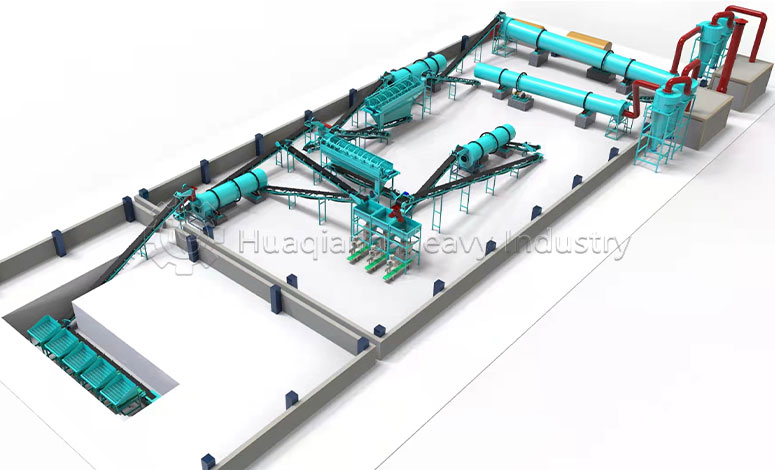NPK Lines: Wisdom in Compact Layout

Establishing a standard NPK fertilizer production line requires chess-like precision in spatial planning. Typically, a medium-sized line with 50,000-ton annual capacity needs 3,000-5,000 sqm – equivalent to seven basketball courts.
Smart layouts can save 30% space – like positioning batching systems above mixers or using conveyors instead of manual handling. Modern compact NPK lines can even boost capacity to 100,000 tons/year with only 40% more space, thanks to highly integrated and automated equipment.
Organic Lines: Spatial Philosophy of Natural Fermentation

Organic fertilizer lines resemble miniature eco-farms needing more “breathing room.” The same 50,000-ton capacity requires 8,000-12,000 sqm – 2-3 times NPK lines. This accommodates: raw material storage (30%), aerobic fermentation (40%), curing (20%), and processing (10%).
Fermentation trench arrangements dramatically affect space efficiency – parallel layouts save 15% space while stepped designs improve material flow. Experts recommend reserving 20% expansion space for seasonal raw material fluctuations.
The organic fertilizer production process defines the systematic steps for converting waste into fertilizer, while organic fertilizer lines represent the physical equipment setup that implements and automates this process efficiently at industrial scale.
Beyond Spatial Requirements
Compliant fertilizer operations transcend spatial standards, requiring three key clearances: Environmental permits demand dust/odor control and wastewater systems occupying 15-20% total area; safety certifications require explosion-proof spacing and fire protection; quality certifications impose strict cleanliness and humidity controls.
Additionally, stable raw material supply chains serve as production lifelines – maintain at least 15-day reserves. Technical teams (3-5 trained operators per line) ensure smooth operations. Remember, excellent fertilizer plants blend equipment, talent, and management harmoniously.





